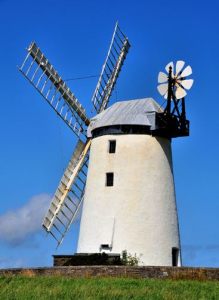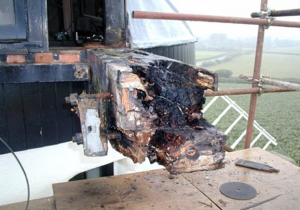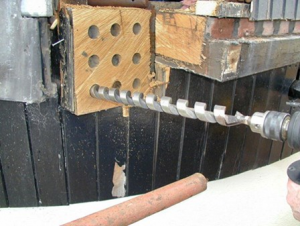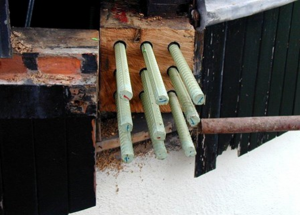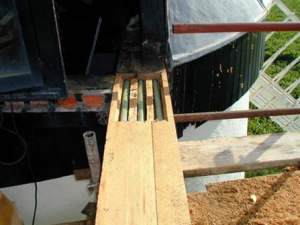This medication is also sometimes used to treat ocular neovascular glaucoma, a condition where new blood vessels grow in
Albania This case study is a prime example of how low disturbance methods can be used to reduce the complexity of essential repairs. Using Rotafix Structual Adhesives, TG6 and a Timber resin splice method saved time and money.
The fan table section of the Ballycopland windmill is supported on a beam that passes through the main tower construction. Over time rainwater has dripped onto the beam create a section of decay. The decay has reached a level where the weight of the fan table section is no longer adequately supported and secure.
If the beam supporting the rear fan table section had to be replaced, it would be necessary to remove the sails then disassemble the tower. This would be costly and time-consuming.
The Rotafix method of using Structural Adhesives and Rods to make connections in Timber is ideally suited to this application.
To remove the need to disassemble the entire sails and tower the Contractor Stronghold Preservation removed the fan assembly from the fan table.
The fan table beam decay was then cut back to solid wood.
A pattern of holes where drilled up the existing parent timber. Rebar rods were then bonded into the holes using Rotafix Structural Adhesive.
A new section of timber was prepared offsite to replace the damaged beam. Slots were cut into the beam to make it easy to locate the rods into the child from the parent timber.
The new child beam was then bonded to the parent by pouring Rotafix TG6 Timber grout into the slots. Once cured the fan rotor was re-assembled.
For further information about Rotafix repairs using Rotafix Structural Adhesive, Rotafix TG6 or Timber Resin Splice please contact Rotafix.
